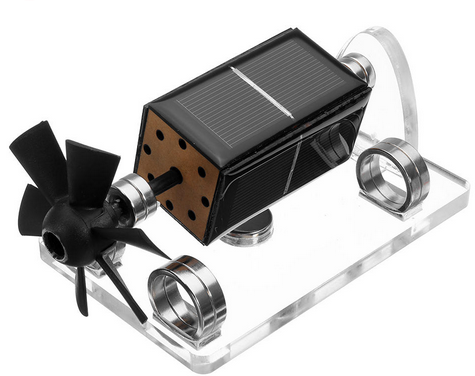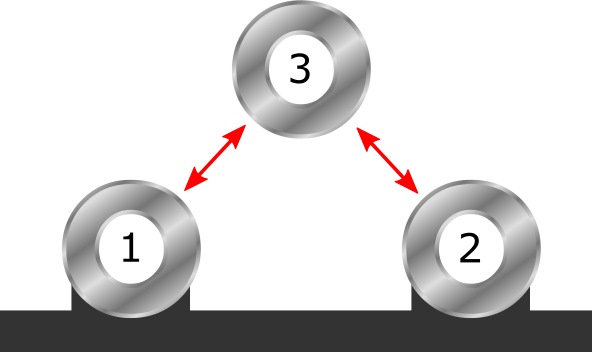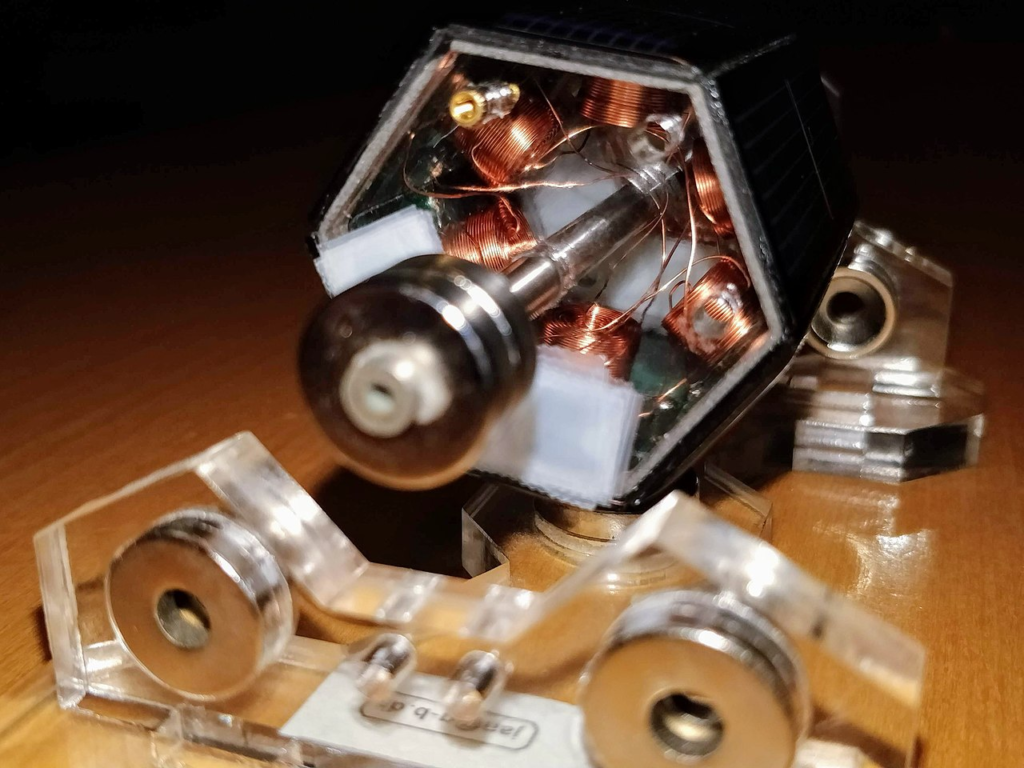
Mendocino motor
The Mendocino Motor is a solar-powered electric motor that is magnetically levitated. It was created by Larry Spring of Mendocino, California, and is named after him.
A spinning shaft is kept up by repelling magnets, and the motor is stabilised by resting a point against a wall. Solar panels installed on the rotating shaft generate currents through coils of insulated wire, which power the device.
They are primarily used as technical demonstrations due to their low power output, and are popular among electrical hobbyists.
Components:
- shaft
- 6 ring magnets
- 4 solar panels
- 4 coils
- frame with wall
- magnet fixed on the centre of the base
The motor is made up of a rotor shaft with an array of solar panels and electromagnetic coils arranged in a barrel shape around the centre of the shaft; the rotor is horizontally mounted in frictionless radial bearings over a central magnet on the motor’s base plate. The axial or thrust direction, is hold in place by a steel ball point of contact with the wall.
Working Principle:
There are 2 sets of magnets with the arrangement in the picture below. Magnets 1 and 2 are fixed to the base. Magnet 3 is attached to the shaft which levitates by the action of repulsive magnetic forces. Note that the 3rd magnet is stable as it sits on a pocket of the magnetic field.

But this configuration is not enough for the shaft to sit still. The shaft itself can move forward or backwards and magnetic instability will eventually cause the shaft to shoot in one direction (see Earnshaw’s Theorem). We then need to bias the magnetic flow to push the system in one direction only and have a wall to prevent the system from shooting off. If we place the floating magnet closer to the wall than the magnets in the base, the shaft tends to lean against the wall.

As there is a point of contact with the wall this adds a tiny bit of friction so this system is not totally frictionless. When in movement the system also faces friction from air and Eddy Currents which are generated when coils are in the presence of a magnetic field. In the picture below you can see another version of this system using 6 solar panels. Here you can clearly see the coils attached to each solar panel.

Because a Mendocino motor is powered by solar panels that get light from above, it can be set up so that the spinning panels provide the on-off cycle. The spinning panels move into and out of a light source because the panels rotate in a Mendocino Motor. The current to the wire coils is switched on and off automatically by this device. The coils are connected in a way that turn on at the appropriate moment according to the rotation of the device itself.
Two opposing solar cells are joined in parallel for each winding. The solar cells that face the light provide electricity to the associated solenoid and generate a magnetic field that is rejected by the polarised field magnet. The solar motor rotates due to this repulsive force (also known as the Lorentz force). The solar cells that face the light turn away from it, the next solar cells face it, and the motor spins smoothly.
Instructions:
- Place the solar panel system in equilibrium on top of the base
- Place the whole system under a light source
- The system should start spinning by itself
Links:
STARK-3 Levitating Solar Powered Desktop Motor Model from Banggood